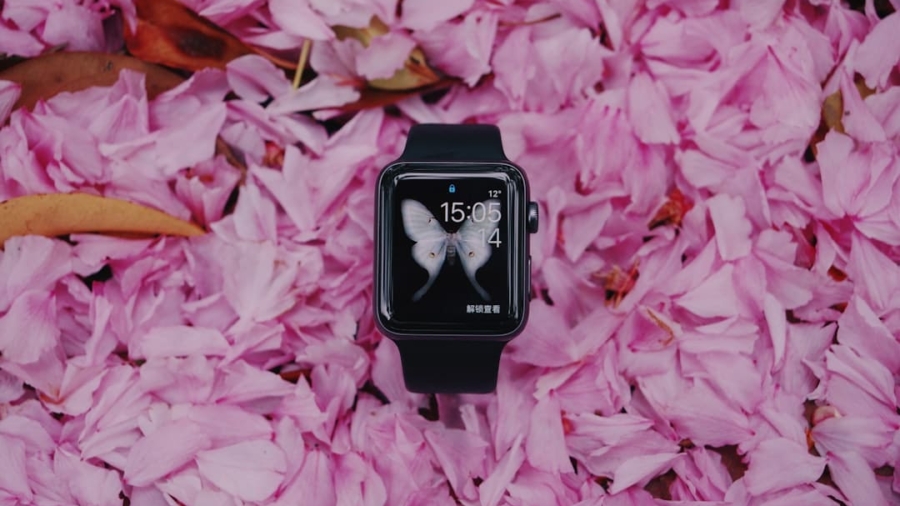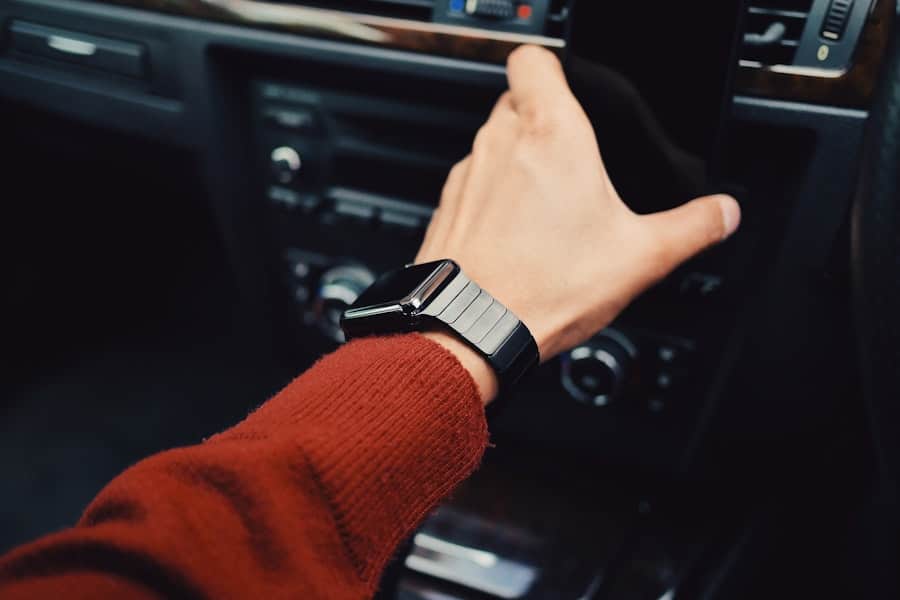The landscape of healthcare has undergone a significant transformation in recent years, particularly with the advent of technology that facilitates remote rehabilitation programs. These programs are designed to provide therapeutic interventions to patients recovering from injuries, surgeries, or chronic conditions without the need for in-person visits to healthcare facilities. The rise of telehealth and digital health solutions has made it possible for patients to engage in rehabilitation from the comfort of their homes, thereby increasing accessibility and convenience.
Remote rehabilitation programs leverage various technologies, including video conferencing, mobile applications, and wearable devices, to deliver personalized care and monitor patient progress. The shift towards remote rehabilitation is not merely a response to the COVID-19 pandemic; it reflects a broader trend in healthcare that prioritizes patient-centered approaches. By allowing patients to participate in their recovery process from home, these programs can enhance adherence to treatment plans and improve overall outcomes.
Moreover, remote rehabilitation can reduce the burden on healthcare systems by minimizing the need for physical appointments, which can be particularly beneficial in rural or underserved areas where access to specialized care may be limited. As technology continues to evolve, the integration of wearable devices into these programs has emerged as a pivotal development, offering new ways to monitor and support patients throughout their rehabilitation journey.
Key Takeaways
- Remote rehabilitation programs offer a convenient and accessible way for patients to receive therapy and support from their own homes.
- Wearable devices in remote rehabilitation provide real-time monitoring, feedback, and motivation for patients, leading to improved adherence and outcomes.
- Types of wearable devices used in remote rehabilitation include activity trackers, smart clothing, and virtual reality headsets, each with unique benefits for different types of therapy.
- Wearable devices track progress through sensors and algorithms, providing data on movement, heart rate, and other relevant metrics to therapists and patients.
- Challenges of using wearable devices in remote rehabilitation include data security, user acceptance, and the need for ongoing technical support, but successful case studies demonstrate their potential for improving patient outcomes.
Benefits of Wearable Devices in Remote Rehabilitation
Wearable devices have revolutionized the way healthcare providers approach rehabilitation by offering real-time data collection and personalized feedback. One of the primary benefits of these devices is their ability to continuously monitor a patient’s physiological parameters, such as heart rate, movement patterns, and even muscle activity. This data can be invaluable for clinicians who need to assess a patient’s progress and make informed decisions about their treatment plans.
For instance, a physical therapist can analyze data from a wearable device to determine whether a patient is performing exercises correctly or if adjustments are needed to optimize recovery. Another significant advantage of wearable devices is their potential to enhance patient engagement and motivation. Many wearables come equipped with features that gamify the rehabilitation process, encouraging patients to set goals and track their achievements.
This interactive element can lead to increased adherence to prescribed exercises and routines. For example, a patient recovering from knee surgery might use a wearable device that provides reminders for exercises and rewards them for reaching milestones, fostering a sense of accomplishment and commitment to their rehabilitation journey. The combination of real-time feedback and motivational tools can create a more dynamic and effective rehabilitation experience.
Types of Wearable Devices Used in Remote Rehabilitation
The variety of wearable devices available for remote rehabilitation is vast, each designed to cater to specific needs and conditions. Fitness trackers are among the most common types of wearables used in rehabilitation settings. These devices typically monitor basic metrics such as steps taken, distance traveled, and calories burned.
While they may seem simplistic, they can provide valuable insights into a patient’s activity levels and overall mobility during recovery. More advanced wearable technologies include smart clothing embedded with sensors that can measure muscle activity and biomechanical data.
Additionally, wearable motion sensors can track joint angles and movement patterns, which is particularly useful for patients recovering from orthopedic surgeries or injuries. These devices not only facilitate precise monitoring but also enable clinicians to identify any deviations from expected movement patterns that could indicate complications or areas needing further attention.
How Wearable Devices Track Progress and Provide Feedback
Wearable devices are equipped with sophisticated algorithms that analyze collected data to track patient progress over time. This tracking capability is crucial for both patients and healthcare providers as it allows for objective assessments of recovery. For example, a wearable device might record the number of repetitions completed during a prescribed exercise regimen or measure the range of motion in a joint.
This data can then be compared against baseline measurements taken at the beginning of the rehabilitation process, providing clear evidence of improvement or areas requiring additional focus. Feedback mechanisms integrated into wearable devices play a vital role in enhancing the rehabilitation experience. Many devices offer real-time alerts or notifications that inform patients when they are performing exercises incorrectly or when they need to adjust their intensity levels.
This immediate feedback helps patients correct their form on the spot, reducing the risk of injury and ensuring that they are getting the most out of their rehabilitation efforts. Furthermore, some wearables allow for remote communication between patients and healthcare providers, enabling therapists to review data trends and provide guidance without needing an in-person visit. This continuous loop of feedback fosters a collaborative approach to rehabilitation that can significantly enhance outcomes.
Challenges and Limitations of Using Wearable Devices in Remote Rehabilitation
Despite the numerous advantages of wearable devices in remote rehabilitation, several challenges and limitations must be addressed for optimal implementation. One significant concern is the variability in technology adoption among patients. While younger populations may be more comfortable using digital health tools, older adults or those with limited technological proficiency may struggle with the complexities of wearable devices.
This disparity can lead to unequal access to the benefits of remote rehabilitation programs, potentially widening health disparities among different demographic groups. Another challenge lies in data privacy and security.
Patients may be hesitant to engage with wearable technology if they feel their personal health information is at risk. Additionally, the accuracy of data collected by wearables can vary significantly between devices; not all wearables are created equal in terms of precision and reliability. Clinicians must be cautious when interpreting data from these devices, as inaccuracies could lead to misguided treatment decisions.
Case Studies: Successful Implementation of Wearable Devices in Remote Rehabilitation
Several case studies illustrate the successful integration of wearable devices into remote rehabilitation programs across various medical fields. One notable example involves a pilot program implemented by a leading orthopedic clinic that utilized smart sensors embedded in clothing for patients recovering from hip replacement surgery. The program monitored patients’ mobility patterns and provided real-time feedback on their gait mechanics during recovery.
Clinicians were able to adjust rehabilitation protocols based on objective data collected from the wearables, resulting in improved recovery times and enhanced patient satisfaction. Another compelling case study comes from a cardiac rehabilitation program that incorporated fitness trackers into its protocol for patients recovering from heart surgery. Patients wore these trackers during their daily activities and exercise sessions, allowing healthcare providers to monitor their heart rates and activity levels remotely.
The program included regular virtual check-ins where clinicians reviewed data trends with patients, providing personalized advice based on their progress. This approach not only improved adherence to exercise regimens but also empowered patients by involving them actively in their recovery process.
Future Trends and Innovations in Wearable Devices for Remote Rehabilitation
The future of wearable devices in remote rehabilitation is poised for exciting advancements driven by ongoing research and technological innovation. One emerging trend is the integration of artificial intelligence (AI) into wearable technology. AI algorithms can analyze vast amounts of data collected from wearables to identify patterns that may not be immediately apparent to clinicians.
This capability could lead to more personalized treatment plans tailored specifically to individual patient needs, enhancing the effectiveness of rehabilitation programs. Additionally, advancements in sensor technology are likely to improve the accuracy and functionality of wearable devices significantly. For instance, developments in biosensors could enable continuous monitoring of biochemical markers such as glucose levels or lactate concentrations during physical activity.
Such innovations would provide deeper insights into a patient’s physiological responses during rehabilitation, allowing for more precise adjustments to exercise regimens based on real-time metabolic data.
The Impact of Wearable Devices on Remote Rehabilitation Programs
The integration of wearable devices into remote rehabilitation programs has fundamentally changed how healthcare providers approach patient recovery. By offering continuous monitoring, real-time feedback, and enhanced patient engagement, these devices have the potential to improve outcomes significantly while making rehabilitation more accessible than ever before. As technology continues to evolve, it is essential for healthcare systems to embrace these innovations while addressing challenges related to accessibility, data privacy, and device accuracy.
The impact of wearable devices extends beyond individual patient care; it has implications for public health as well. By facilitating remote rehabilitation, healthcare systems can reduce costs associated with hospital visits while improving overall patient satisfaction and outcomes. As we look toward the future, it is clear that wearable technology will play an increasingly vital role in shaping the landscape of rehabilitation medicine, paving the way for more effective and personalized care solutions that meet the diverse needs of patients across various demographics and conditions.
A related article to How Wearable Devices Enhance Remote Rehabilitation Programs is “The Best Smartwatch Apps of 2023” which discusses the latest and most innovative apps available for smartwatches. These apps can further enhance the remote rehabilitation experience by providing users with personalized workouts, tracking their progress, and offering real-time feedback. To learn more about the best smartwatch apps, check out the article here.
FAQs
What are wearable devices?
Wearable devices are electronic devices that can be worn on the body as accessories or implants. These devices are equipped with sensors and software that collect data and track various aspects of the user’s health and fitness.
How do wearable devices enhance remote rehabilitation programs?
Wearable devices enhance remote rehabilitation programs by providing real-time monitoring of a patient’s progress and adherence to the rehabilitation plan. They can track movement, heart rate, and other vital signs, allowing healthcare providers to remotely assess the patient’s performance and adjust the rehabilitation program as needed.
What types of wearable devices are commonly used in remote rehabilitation programs?
Common types of wearable devices used in remote rehabilitation programs include fitness trackers, smartwatches, and specialized medical devices such as motion sensors and electromyography (EMG) sensors. These devices can monitor a wide range of activities and physiological parameters to support the rehabilitation process.
How do wearable devices benefit patients in remote rehabilitation programs?
Wearable devices benefit patients in remote rehabilitation programs by providing them with real-time feedback on their progress, motivating them to adhere to their rehabilitation plan, and enabling them to take an active role in their recovery. These devices also allow patients to communicate with their healthcare providers and receive personalized guidance and support.
Are there any limitations to using wearable devices in remote rehabilitation programs?
Some limitations of using wearable devices in remote rehabilitation programs include potential privacy and security concerns related to the collection and transmission of personal health data. Additionally, not all patients may have access to or be comfortable using wearable devices, which could limit their effectiveness in certain populations.



